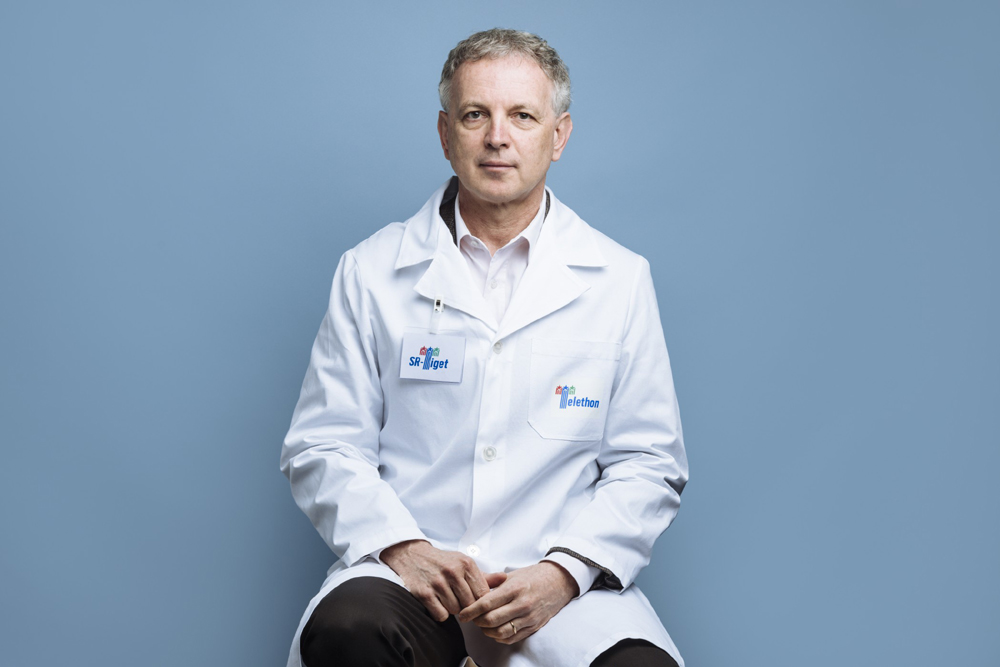The innovative technique developed in the laboratories of the Telethon San Raffaele Institute for Gene Therapy for the treatment of two extremely serious genetic diseases can also be effective in treating tumours.

This finding is confirmed by the study coordinated by Luigi Naldini, the expert who led the discovery that earned the cover of the July 2013 edition of Science, which showed how macrophages, blood cells that normally accumulate in tumours, can be converted into delivery vehicles for anti-cancer genes to combat the neoplasia.
The application of Naldini's discovery to the oncologic field was supported by grants from the Italian Association for Cancer Research (AIRC) and the European Research Council (ERC).The study, published in the prestigious international journal Science Translational Medicine, confirms the major potential implications of the research for rare genetic diseases in particular; studies conducted on diseases affecting very small numbers of people worldwide can yield important findings that can be useful in the treatment of more common diseases, such as, in this particular case, breast cancer.Luigi Naldini, who also coordinated the two gene therapy studies concerning children suffering from serious genetic diseases (metachromatic leukodystrophy and Wiskott-Aldrich syndrome), explains: «In this new work, we have adapted the gene transfer technique and the engineering of the blood cells to the treatment of tumours. In the case of genetic diseases, the patient's haematopoietic stem cells (the stem cells of all the elements in the blood) are modified by introducing the functioning gene, using lentiviral vectors so as to restore the originally flawed function back to normal. In the new work, we used the same method to insert into the stem cells a gene able to carry out anti-cancer action in the progeny of the cells».
The therapeutic gene chosen to block the growth of the tumour is the alpha interferon, a molecule normally produced by our bodies in response to infections, but which also has proved powerful in combating tumours. The clinical use of the interferon has, however, been limited until now because it is highly toxic when administered systemically. In order for the treatment to target tumour cells, the lentiviral vector already used during the recent clinical tests has been modified so as to ensure the anti-cancer gene is activated only in a specific fraction of the differentiated blood cells, the monocytes/macrophages (generated by the stem cells), which are normally drawn by the blood circulation towards tumours, where they carry out an action that boosts the growth of the tumour.
What is new about this strategy is that it has selected as a cell delivery vehicle of the interferon a population normally present in the blood at a low level and increasing considerably in the presence of a tumour. In this way, the delivery of the interferon is specifically targeted to accumulates in the tumour only, where it can exercise its anti-cancer function, therefore avoiding the toxic effects of systemic administration. In order to verify the safety and efficacy of the gene therapy when applied to human stem cells, a "humanised" mouse was created by transplanting modified human haematopoietic stem cells to express interferon, thus recreating a human haematopoietic system in the mouse.
This model allowed researchers to demonstrate that the therapy is both safe and effective in inhibiting the growth of tumours, also in humans.Studies have indicated that the targeted release of the interferon into the tumour can fight cancer in two ways, i.e. by allowing for the selective action of an anti-cancer molecule in the tumour and, at the same time, by re-programming the therapy delivery vehicles, the macrophages, from pro-cancer cells to anti-cancer cells.The researchers explain: «Our results provide encouraging evidence of the efficacy and safety of the strategy in the experimental models. Further preclinical studies are now necessary to consider which types of tumours might benefit most from this gene therapy and to prepare the clinical trials which could begin a few years from now».
The results of the gene therapy are due to the constant support guaranteed by Telethon for top-quality scientific research. In addition to the investments made by Telethon regarding the individual diseases studied (in particular metachromatic leukodystrophy and Wiskott-Aldrich syndrome), it is also important to remember that the Foundation has been convinced of the potential offered by gene therapy right from the beginning. To date, funds totalling € 50.6 million have been invested by the Foundation in the Telethon San Raffaele Institute for gene therapy, 11 million of which in research regarding metachromatic leukodystrophy and 8 million for Wiskott-Aldrich syndrome.